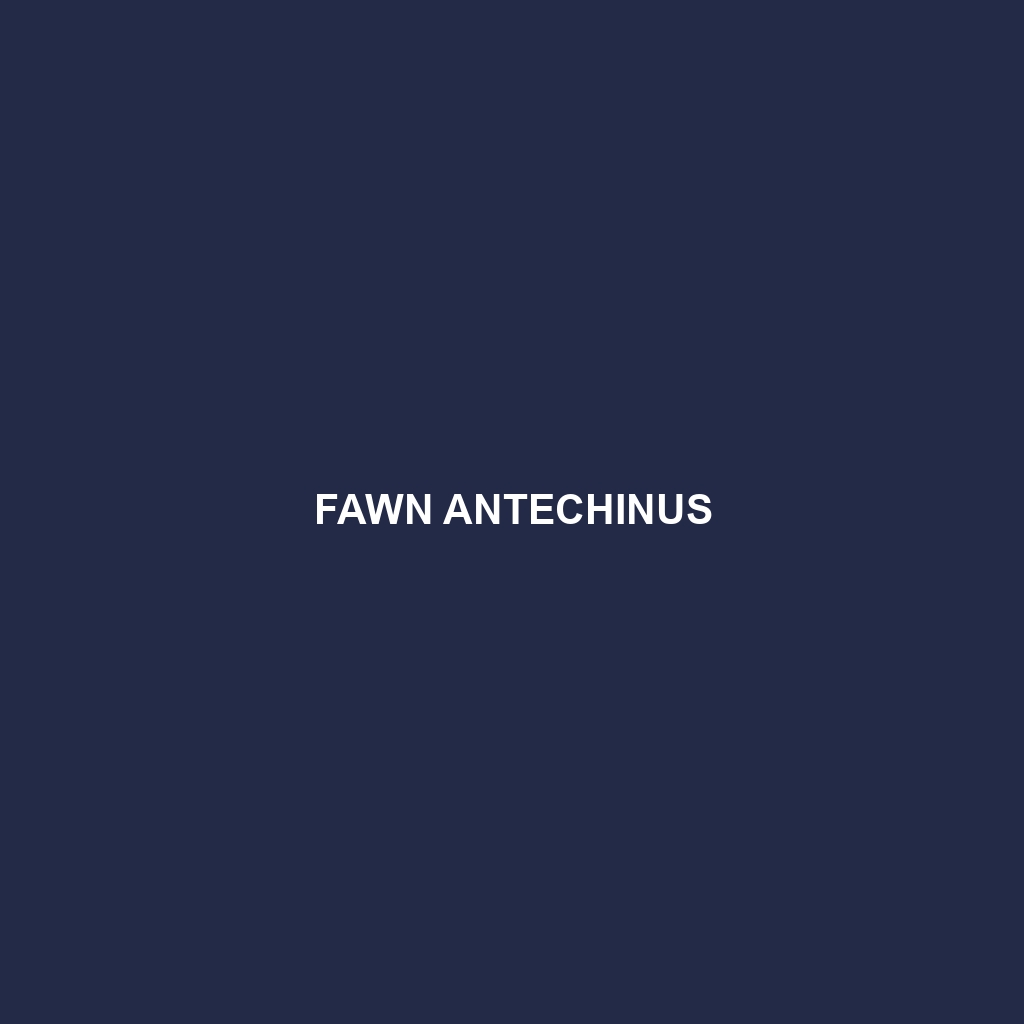Fawn Antechinus
The Fawn Antechinus (Antechinus bellus) is a small, carnivorous marsupial native to northern Australia. Known for their energetic and lively demeanor, these creatures play a crucial role in their ecosystems as both predators and prey. Despite their petite size, they are powerful and resilient, exhibiting unique behaviors and adaptations that have fascinated biologists and nature enthusiasts alike.
Physical Characteristics:
1. Size and Build:
Length: The Fawn Antechinus measures between 10 to 16 cm (4 to 6 inches) in body length, with an additional tail length of about 8 to 11 cm (3 to 4 inches).
Weight: They typically weigh around 30 to 55 grams (1 to 2 ounces).
2. Coloration:
They have a distinct fawn-colored fur, which gives them their name. This fur is dense and soft, providing insulation and camouflage.
The underparts of the Fawn Antechinus are generally lighter, varying from off-white to pale beige.
3. Special Features:
Ears and Eyes: They possess large, rounded ears and big, dark eyes that enhance their nocturnal vision and hearing.
Tail: Their tails are slightly prehensile, aiding in balance and grasping branches while navigating their arboreal habitats.
Behavioral Traits:
1. Social Interactions:
These marsupials are generally solitary, except during the breeding season, when males and females come together to mate.
Males exhibit a unique and intense mating system known as “semelparity,” where they engage in a frenzied period of mating that ultimately leads to their death due to stress and exhaustion.
2. Feeding Habits:
Fawn Antechinus are insectivorous, feeding primarily on insects, spiders, and other small invertebrates.
They hunt primarily at night, using their keen senses to locate prey in the leaf litter and undergrowth.
3. Ecological Roles:
As predators, they help regulate insect populations, maintaining a balance in their ecosystem.
They also serve as prey for larger predators such as owls, snakes, and other carnivorous mammals.
Habitat and Adaptations:
1. Natural Habitat:
Fawn Antechinus are mainly found in tropical and subtropical forests, woodlands, and grasslands of northern Australia.
They prefer areas with dense vegetation that provide ample cover and food resources.
2. Adaptations:
Nocturnal Lifestyle: Their nocturnal nature helps them avoid many diurnal predators and exploit nighttime prey resources.
Reproductive Strategy: The intense, short-lived breeding season ensures a high turnover rate and the continuation of strong genetic lines.
Climbing Abilities: Their strong limbs and prehensile tails aid in climbing and navigating through complex forest structures.
Conservation Status:
The Fawn Antechinus is currently listed as Near Threatened due to habitat loss and fragmentation caused by human activities such as deforestation and land conversion.
Conservation efforts are focused on habitat preservation and restoration, along with monitoring of population trends.
Fun Facts:
The Fawn Antechinus has one of the shortest mammalian lifespans, with males living only about one year due to their unique mating habits.
Females can give birth to up to ten offspring at a time, which they carry in a pouch similar to kangaroos.
They are known to enter a state of torpor, a short-term hibernation, to conserve energy during periods of food scarcity.
By understanding and appreciating the Fawn Antechinus, we can better appreciate the incredible diversity and complexity of life within Australia’s ecosystems.
